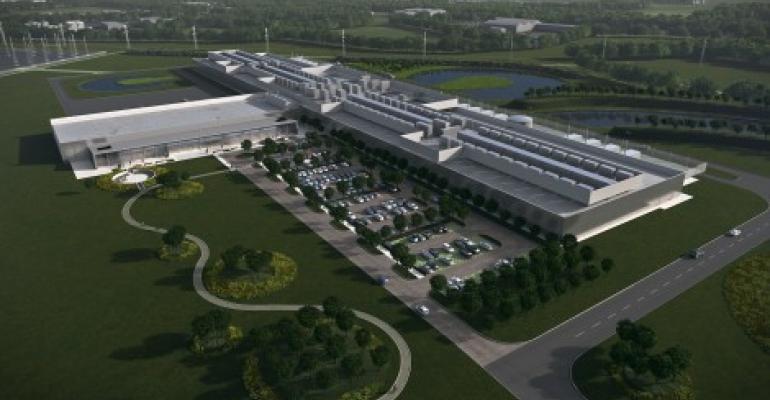A village in Ireland will be the location of the second Facebook data center in Europe, the company officially confirmed on Sunday.
The social network has been doing site selection work in Ireland and seeking planning approvals since at least nine months ago, when it was reportedly working with County Meath officials. The next Facebook data center will be built in Clonee, which is part of Meath.
There were 1.01 billion daily active Facebook users on average in September 2015, the latest month for which the data is available. Out of 1.5 billion registered Facebook users about 310 million were in Europe as of November 2015, according to Internet World Stats. It is unclear how many of them were active users, however.
The first Facebook data center in Europe came online in 2013 in Luleå, Sweden. “Ireland has been our international headquarters since 2009, and our new Clonee data center will continue Facebook’s significant investment in the country and in Europe,” Tom Furlong, Facebook’s VP for site operations, wrote in a blog post.
Safe Harbor and Data Centers
Besides Europe being one of the top global markets for internet services, one major impetus to build data centers there was created last year by the European Court of Justice, when it annulled Safe Harbor, a 15-year-old blanket legal framework internet companies used to transfer European citizens’ personal data across the Atlantic for storage in US data centers. ECJ’s decision to strike down Safe Harbor created a lot of confusion for companies with global data center infrastructure and sent a signal that European authorities preferred that service providers store Europeans’ data in Europe.
Read more: Safe Harbor Ruling Leaves Data Center Operators in Ambiguity
Custom Hardware Throughout
The facility will support the latest and greatest of custom Facebook hardware, a lot of which the company has open-sourced through the Open Compute Project, its open source hardware and data center design initiative. All server and storage hardware will be OCP, the company said. It will also employ the company’s custom network fabric, as well as its Wedge and 6-Pack network switches.
Read more: With its 100-Gig Switch, Facebook Sees Disaggregation in Action
It will be one of the first two Facebook data centers to use its super-fast 100G switches. The other one will be the facility that’s currently under construction in the Dallas-Fort Worth region.
Facebook Data Center in Clonee, Ireland, by the Numbers:
- Target completion date: late 2017 to early 2018
- Site: 227 acres
- Phase I data center: 340,000 square feet
- Phase I admin area: 70,000 square feet
Powered by Wind
Energy consumed by the future Facebook data center in Ireland will be carbon-neutral, the company said. Like its future Dallas data center, as well as its existing Altoona, Iowa, site, it will rely completely on wind power. The Luleå data center is powered by hydro.
In addition to Altoona and Luleå, the company has built data centers in Prineville, Oregon, and Forest City, North Carolina. It also leases capacity from wholesale data center providers in Ashburn, Virginia, and Singapore.
Indirect Free Cooling
Because of high air salinity in Clonee – the village is close to the Irish Sea – Facebook will be using a different cooling system design than usual. It will rely on an indirect economization rather than its typical airside economization system that uses filtered outside air to cool the hardware inside.
Indirect economization systems still use outside air for cooling, only instead of pushing outside air onto the computer floor, they use it to cool a heat exchanger, which extracts heat from the air that circulates through the hardware. This is a form of free cooling used in areas where air contains a lot of salt or other particulate matter.





